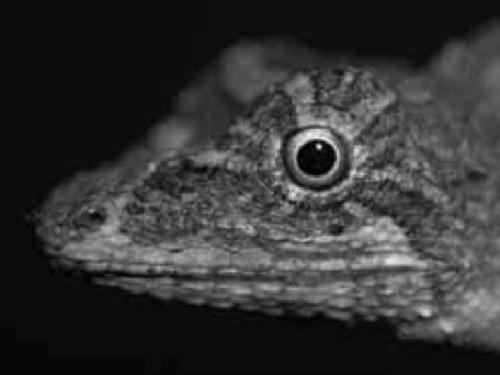AHM Ali Reza
Other projects
My research project will provide an updated list of the herpetofauna of Bangladesh based on primary and secondary data. This project will also identify the conservation needs of the herpetofauna of Bangladesh and work towards their long-term survival.

Lygosoma bowringgii.
Bangladesh is a tropical country situated in southeast Asia, containing a unique and highly threatened biota. Least understood in terms of research and conservation initiatives is the herpetofauna. IUCN Bangladesh produced a set of Red Book of Threatened Animals in 2000 which reports 131 species of herpetofauna to be occurred in Bangladesh and 112 species (85%) are facing conservation threats of various kinds. About 43% of all herpetofauna have been categorized as 'Data Deficient' which is a category that suggests 'no information available on these species'. Even this high value is likely to be an underestimate, because the Red Book of Bangladesh was produced mainly based on partial and outdated information. A number of unreported species have been reported since the Red List was produced and many of them somehow escaped from the list. For example, species like Calotes emma, a garden lizard like animal was collected from Bangladesh in 1960's by K.S. Ross and D. Cavagnaro and preserved in the California Academy of Sciences Museum, but is not cited on our extensive reptile list. Therefore, before initiating integrated biodiversity conservation activities in Bangladesh, we urgently need to update the species list supported by extensive fieldwork in all representative habitats of the country.

Aspideretes gangeticus.
My research project will provide an updated list of the herpetofauna of Bangladesh based on primary and secondary data. I will conduct general surveys with 2 to 3 field assistants in a wide range of habitats starting in summer 2006. The survey will include active searching on marked and unmarked trails, and intensive microhabitat searching. Frequent surveys will be made along seasonal and perennial streams and in directions orthogonal to, or away from existing trails. I will collect data in different forest habitats: evergreen, semi-evergreen, deciduous, mangrove, and rain forests to generate information on the most diverse amphibians and reptiles habitats of the country. This information will be a ready reference to prioritize management initiatives for specific habitats since we can not afford to conserve all of our natural habitats.

Naja naja.
So far the project have been launched, I have been visiting major biological collections in the USA for the specimens that have been collected from Bangladesh. It is unfortunate that Bangladesh does not have any national natural history museum or biodiversity collection depository. But however, some animal collections have been maintained by various graduate schools in the country. In many cases, these specimens are not identified properly. During my fieldwork, I will go through these specimens and try to help the school authority identifying specimens if they ask assistance from my side.

Ptyctolaemus gularis.
I will also document the distribution and biogeography of herpetofauna by producing a set of GIS maps for all reported species. Using hand-held GPS receiver units in the field, I will record UTM coordinates for each individual amphibians and reptiles recorded from the field. Data obtained from the field will then be integrated with remote sensing data and assembled into a ground-truthed and vector-based GIS database at the Texas Tech University's GIS laboratory. These GIS map set will be the baseline information for initiating species based herpetofauna conservation management plan in Bangladesh.
This project will also identify the conservation needs of the herpetofauna of Bangladesh and work towards their long-term survival. For this activity, I will conduct a questionnaire survey among all the relevant stakeholders and people living in and around forested habitats. I will use a questionnaire to interview people from different local community groups and policy makers. I will also record the traditional beliefs, taboos, myths and religious conservation practices related to the herpetofauna. Religious or other sacred groves will be focused if any amphibian and reptile species are conserved or worshipped traditionally. Among herpetofaunal animal groups, snakes have very bad reputation in the muslim community, whereas hindu community worship some snakes. Since Bangladesh is mainly dominated by these two religious communities therefore, it is important to understand the religious attitudes towards these animals to minimize the conflicts and to conserve them in a more rational way.
To assess the conservation threats of herpetofauna of Bangladesh, I will consider the physical, biological and anthropogenic factors, including uncontrolled use of pesticides in agricultural fields. The over-riding cause of herpetofaunal declines has been the loss, modification and fragmentation of habitat through agricultural intensification and development. Other factors include natural succession leading to unsuitable habitat structure, introduction of invasive flora and fauna, inappropriate habitat management, effect of public access and use of commercial important species, and persecution. Among all these predicted factors, I will rank them up and make recommendations how to minimize the effects. Finally, I will try to link my project to the on-going conservation project in the country to focus the herpetofaunal conservation. In this way, we could encourage and help the Government to formulate a national herpetofaunal management plan in Bangladesh.